
Risks going overland from Nepal to Tibet: UPDATED FOR 2024: Going overland from Nepal to Tibet takes you to high altitude VERY quickly and is not advised. Read on for reasons why.
Contact us for FREE Tibet travel planning
UPDATED FOR 2024
The Land of Snows is the travel blog of Jamin “Lobsang” Lee. He has lived and worked in various areas of Tibet for over two decades and Travel extensively greater Himalaya region in Bhutan, Nepal and Ladakh, He has decades of experience traveling, climbing and trekking the Himalayas. Here he has shared Travel informations of Tibet and other region from his own direct experiences. I hope these information will help you make your Tibet travel plan. For direct Travel consultation and Tibet Travel Agency Recommendation, Contact us via info@thelandofsnows.com.
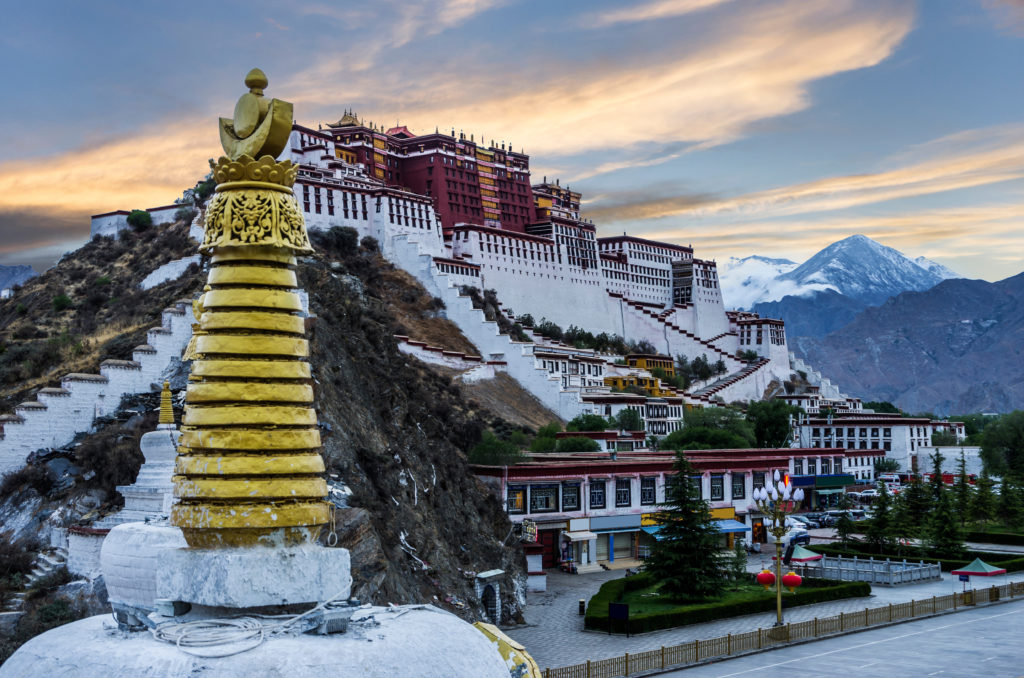
Lhasa’s Potala Palace
Going Overland from Nepal to Tibet
NOTE: Please read this post carefully. As an experienced Himalayan climber, trekker and explorer (I lived on the high Tibetan Plateau full-time for 15 years with an additional 5 years of living there part-time), who is also a Certified Wilderness First Responder, I write this post from my own vast experiences along this route.
While I don’t recommend going Overland from Nepal to Tibet due to the increased risk of altitude sickness, I do recommend going in the opposite direction going overland from Tibet to Nepal. I write this post NOT to call out travel companies that I think are dangerous and reckless with their clients lives (which some of them are!!), but to let you know that there are safer ways to travel in Tibet.
The overland route connecting Tibet and Nepal is an amazing journey that I highly recommend (I’ve done it dozens of times). It allows you to see many of the best places in Tibet including Lhasa, Yamdrok Lake, Karo La Glacier, Gyantse, Tashi Lhunpo Monastery and get up close to Mt Everest from near the North Face Base Camp before arriving to Kathmandu.
I’m often asked which direction people should take when doing this route: Nepal to Tibet OR Tibet to Nepal. If you are new to high altitude travel in the Himalayas, you might think that either way is fine. However, there is one direction that is much safer to take than the other.
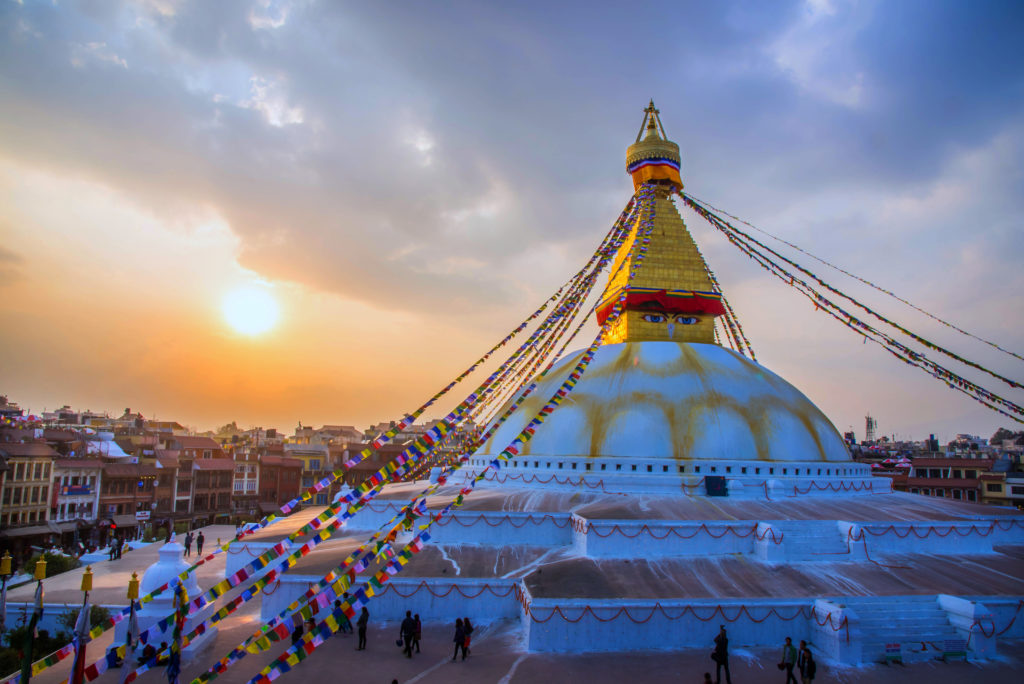
The stupa at Boudhanath is one of the most visited sites in the Kathmandu Valley
Danger in Going Overland from Nepal to Tibet
Many people think that the city of Kathmandu is located high up in the Himalaya Mountains. In reality, it lies in a valley at an elevation of around 1350 meters (4430 feet). If you come from a low-lying coastal area, 1350 meters above sea level might sound high, but in Tibet many towns and villages are well over 4000 meters (13,100 feet) high with many mountain roads crossing passes well in excess of 5000 meters (16,400 feet).
When going to Tibet, it is extremely important to take time to acclimatize by gradually, slowly ascending to higher and higher altitude. Otherwise, you put yourself at higher risk of serious and potentially life-threatening altitude sickness. Because Kathmandu sits at only 1350 meters, it doesn’t help very much with acclimatizing your body to the considerably higher altitudes that await you in Tibet.
All foreign travelers going to Tibet must be on a full organized journey that includes a private vehicle, driver, permits and a tour guide. There are no exceptions. Most travel companies that organize the journey going Overland from Nepal to Tibet will have you take a bus or private vehicle from Kathmandu to Rasuwa. Going to the border of Nepal, you can take public buses. It is not until you cross into Tibet where your organized journey begins. Rasuwa is the last village on the Nepal side before crossing into Tibet. The elevation at the actual border crossing between Nepal and Tibet is 1825 meters (just under 6000 feet).
At Rasuwa, you will go thru Nepal Customs and then cross a metal bridge into Tibet where you will be met by your Tibetan guide. You will then go thru China Customs. After going thru China Customs, you will travel on to the town of Kyirong, located 40 kilometers away, where you will stay the night. The altitude at Kyirong is 2800 meters (9185 feet). So, the first day you would travel all the way from Kathmandu to Rasuwa and then to Kyirong, Tibet. This is fine and does pose a big problem as Kyirong at 2800 meters in altitude is still not that high. However, the real problem is the route that is to come the next day.
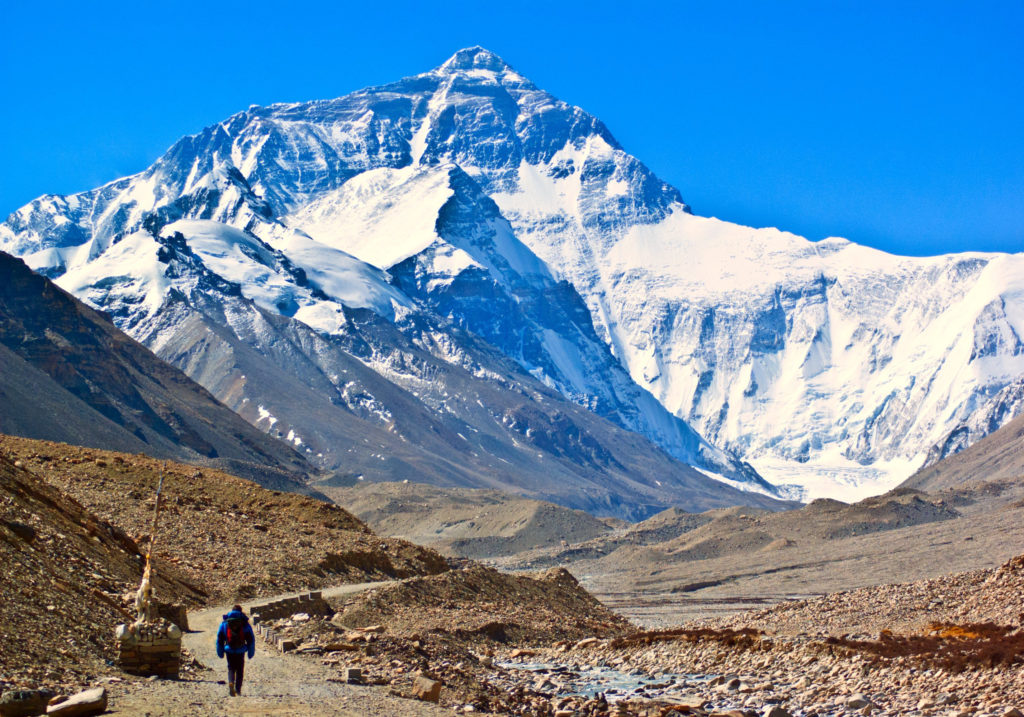
The North Face Everest Base Camp is nearly 5100m in elevation. When going from Kathmandu, you reach here on Day 3, which is far too quickly for your body to acclimatize.
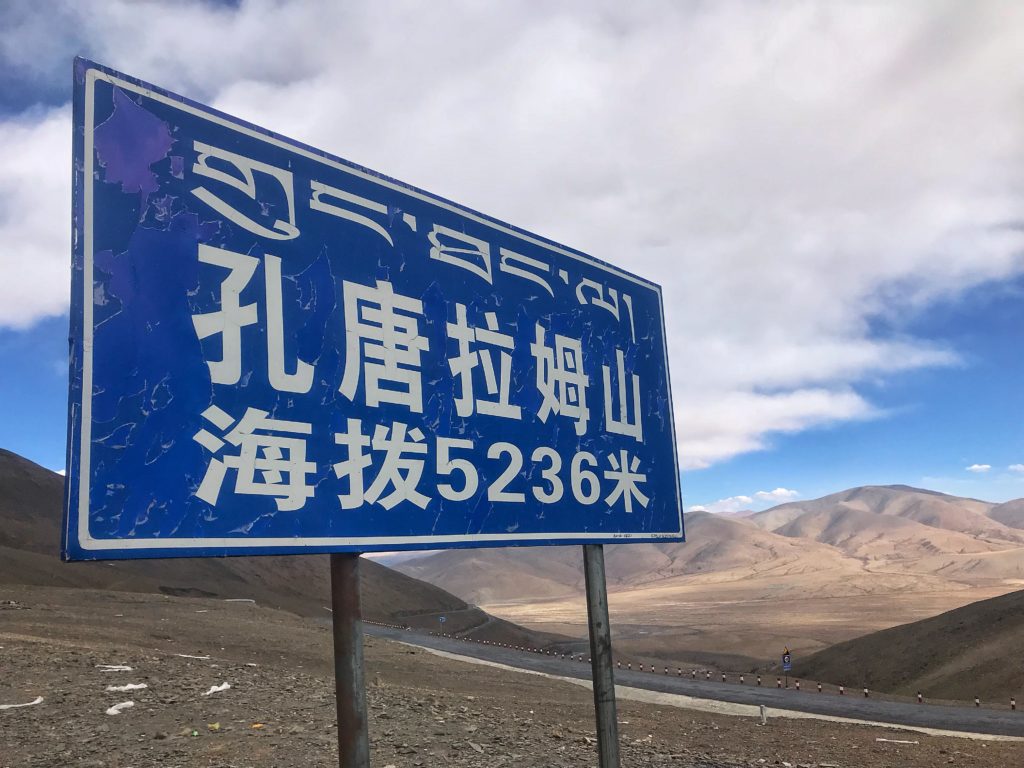
Kungthang La Pass, elevation 5236m (17,178 ft), is crossed on Day 2 of the journey from Kathmandu to Lhasa. Going this high so quickly can actually be deadly!
Huge Elevation Gain from Kyirong to Old Tingri
On the second day of going Overland from Nepal to Tibet, you depart Kyirong and immediately start ascending…..and ascending…..all the way to the Kungthang La Pass at 5236m (17,178 feet). Going this high just hours into Day 2 of your journey can lead to serious, life-threatening altitude sickness. I cannot stress how dangerous this is, yet many travel agencies in Kathmandu, Lhasa and Chengdu will arrange this. It is absolutely foolish of travel companies to KNOWLINGLY place their clients lives at risk going to over 5200m with barely 1 day of altitude acclimatization. Yet, many companies do it, including the top listed travel company on Google. This proves that these companies know NOTHING about high altitude acclimatization and proves they care only about your money….and not your safety and well-being.
After crossing the extremely high Kungthang La Pass, most travel companies have you continue on to the town of Old Tingri, elevation 4340m (14,240 feet) for your second night. Remember, just yesterday morning you would have been in the low-lying Kathmandu Valley at 1350m (4430 feet). Now, in the course of only 36 hours, you have crossed a 5200+ meter high pass and are in a town at over 4340 meters (14,240 feet) in remote Tibet that only has an extremely basic clinic in case you are altitude sick (which there is a good chance you are!!). The chances of you feeling very sick (or worse) are extremely high.
Almost all of the low-quality, budget travel companies that offer the Overland from Nepal to Tibet journey will have you go to Mt Everest the morning of Day 3, or a mere 48 hours after leaving Kathmandu. Along the way to Everest Base Camp, you will cross yet another mountain pass that reaches 5200 meters (17,060 feet) in altitude before arriving to the Tibet-side Base Camp at just under 5100 meters (16,732 feet) high, where you will stay the night. Again, this is WAY TOO FAST to be this high. At a minimum, you should have 7 days to acclimatize before staying at this altitude. Many of our journeys (click link for details) don’t have clients reaching this high of altitude until Day 9 of the journey. Arriving on Day 3 is absolutely unacceptable. I would avoid any travel company that offers this specific journey, as they clearly do not care about your well-being.
From Everest Base Camp, these companies will then have you continue on to Lhasa. What makes going Overland from Nepal to Tibet so dangerous is that you immediately begin climbing to extreme altitude after entering Tibet. With proper acclimatization, most people can adjust to the high altitude of Tibet. But, it’s impossible to properly acclimatize when going overland from Nepal to Tibet as the topography quickly goes up, up and up.
Now, some of you might already be acclimatized to high altitude because you are coming down from the Nepal side Everest Base Camp Trek or some other higher altitude trek or climb. In that case, you will most likely be fine going overland from Nepal to Tibet. However, most of the companies that arrange this journey do so as a group tour that can have as many as 35 people in it. In my experience, rarely are more than 15% or 20% of these people in the group tour properly acclimatized to high altitude. Bottom line: The risks of taking this specific route in direction from Nepal to Tibet are high. But, there is a safer option for you.
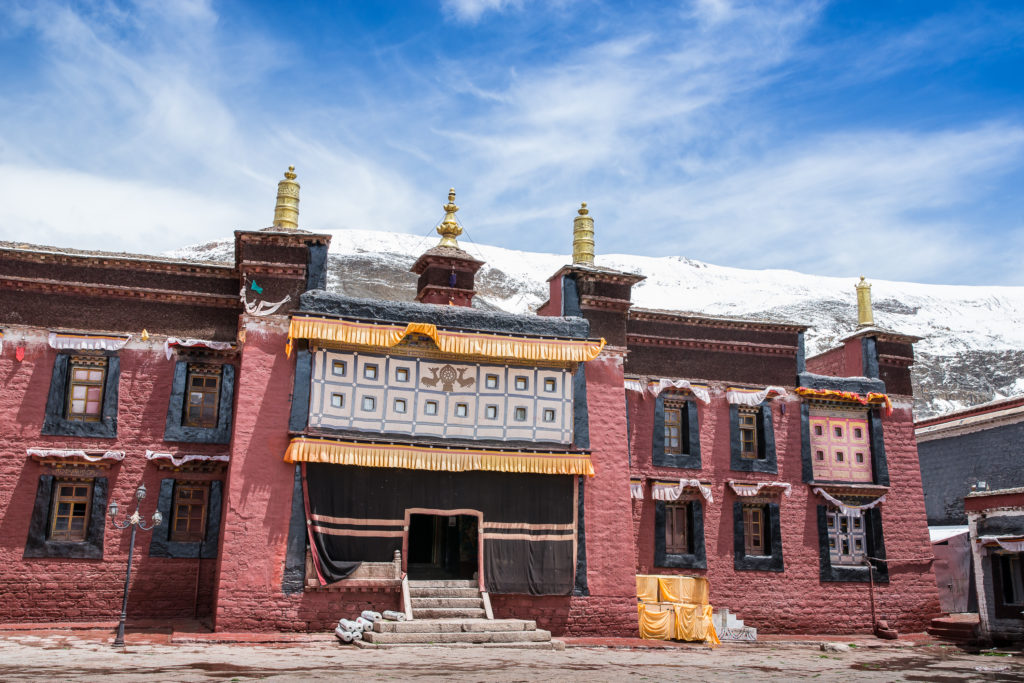
Sakya is one of Tibet’s most important monasteries
A safer way to travel
Rather than go overland from Nepal to Tibet, I recommend doing it in reverse order. By going overland from Tibet to Nepal, you can acclimatize in Lhasa before heading out to higher altitude areas of Tibet. The best option is to stay 1 or 2 nights in Xining, elevation 2300 meters (7500 feet) before flying or taking the train to Lhasa. I then recommend staying at least 3 nights in Lhasa, elevation 3650 meters (11,975 feet) before going any higher. While there is still some risk that you could develop altitude sickness, the risk is far lower than going overland from Nepal to Tibet. From Lhasa, I recommend staying one night in Gyantse (4000 meters), one or two nights in Shigatse (3840 meters), one night in Sakya (4325 meters) and one night in Shelkar (4300 meters) before arriving to the North Face Everest Base Camp (5100 meters). With this itinerary (Overland from Tibet to Nepal), you can get between 8 to 10 days of altitude acclimatization before arriving to Mt Everest…compared to less than 3 days of acclimatization if you go overland from Nepal to Tibet. The difference is HUGE and could potentially save your life.
If you have to start your journey in Nepal, you can fly from Kathmandu to Lhasa and begin your overland journey that way. There are daily flights between these 2 cities year-round. Just make sure that you spend a minimum of 3 nights in Lhasa (4 is better!) before setting off on the journey to Mt Everest and back to Kathmandu, making sure that you acclimatize along the way.
NOTE: There absolutely is still a risk of altitude sickness when going overland from Tibet to Nepal. The ONLY way to avoid altitude sickness is to avoid high altitude! However, going in this direction (Tibet to Nepal) gives your body FAR more time to adjust to high altitude, which exponentially reduces the risk of serious altitude sickness compared to the overland route from Nepal to Tibet.
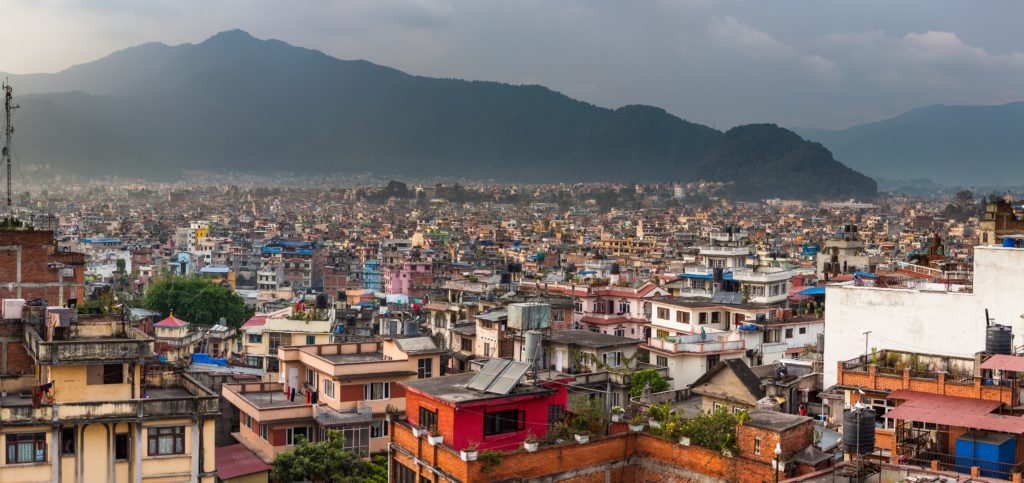
Overlooking Kathmandu, Nepal
Summary of going from Nepal to Tibet
The route connecting Tibet to Nepal is full of amazing beauty and is considered one of the best road trips in Asia. I have done it dozens of times and HIGHLY recommend it. Starting from Kathmandu, this route quickly ascends to a very unhealthy altitude level that can cause serious altitude sickness (or worse). Many low quality/budget travel companies offer this route, despite the risks that it poses to their clients. A better option is to do this route in REVERSE order going from Tibet to Nepal. That way you can acclimatize for a week or more before spending the night at over 5100 meters (16,732 feet) at Everest Base Camp on the Tibet side. For even more time to acclimatize, consider staying 1 or 2 nights in the city of Xining, China (elevation 2300 meters) before flying or taking the train to Lhasa. Going overland from Nepal to Tibet without being acclimatized is foolish. Don’t do it. We care about you and want you to experience Tibet being safe and healthy!
If you have any questions about traveling in Tibet or any other area of the Himalayas, contact us. We will give you all the free advice that you want! Contact us on info@thelandofsnows.com
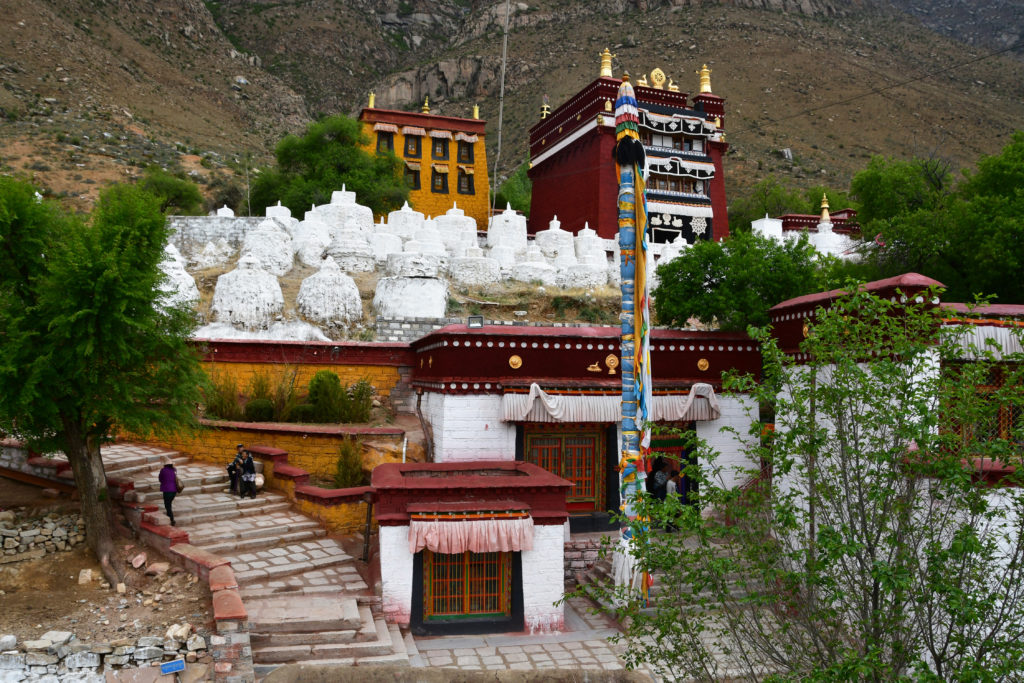
Lhasa’s Pabonka Hermitage
